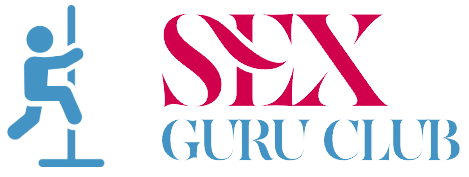Sleep disturbance and heightened arousal to surroundings can be caused by many things. Shift work, travel and medications can all interfere with your body’s natural sleep-wake cycle.
There are three types of arousal disorders recognized by the ICSD: confusional arousals, sleepwalking and REM sleep behavior disorder. Each differs in their clinical features and age of onset.
Night terrors
During an episode of night terrors (also known as pavor nocturnus), your body may shake, thrash around, and show other signs of being terrified while you sleep. Though it’s most common in kids, an estimated 1 to 2 percent of adults experience them as well. Night terrors usually occur during slow-wave sleep or stage N3 of the sleep cycle and can last for up to an hour, after which you’ll typically fall back asleep.
Unlike nightmares, night terrors do not involve images or other indications of dreaming. They often resemble a panic attack and are more likely to affect younger children who may have a fever, a full bladder, or a stomachache. Although they look terrifying, night terrors are not dangerous and don’t normally cause injury to your child. They’re also not likely to affect their daily functioning or memory.
If you or a loved one experiences night terrors frequently, talk to your doctor. They’ll ask you to keep a sleep diary and rate your sleep quality over time to get clues about the cause. They may also refer you to a specialist or conduct a sleep study. Medications that act on the central nervous system are rarely prescribed for night terrors, as controlling stress levels and treating an underlying health concern is a more effective approach.
Sleepwalking
Sleepwalking is a sleep disorder that involves complex behaviors during arousals from non-rapid eye movement (NREM) sleep. It can occur during any part of the night and affects up to four percent of adults. It can lead to a variety of activities, from opening the door or climbing a ladder to eating, playing and sexual behavior. It may also result in violent or harmful behaviors toward others and yourself. It is usually difficult to wake up a sleepwalker and the person has no memory of what took place during the episode.
This type of parasomnia is similar to sleep terrors, but the two are not to be confused. During sleep terrors, the patient is awakened from deep NREM sleep and may have rapid heart rate, sweating, difficulty breathing and seemingly random body movements. These episodes are frightening for household members, and attempts to wake the person up usually have little success. In addition, the person has slow mentation and cannot offer any extended sequence of mental images to describe what is happening during an episode.
While there is no definitive cause for this sleep disturbance, it can run in families and has been associated with stress, alcohol use, prior sleep deprivation and a family history of sleep disorders. The condition is more common in children and tends to diminish with age. Treatment for the disorder is usually not necessary, but healthcare professionals recommend keeping a sleep diary and undergoing an overnight sleep study to see what might be interfering with the person’s sleep cycle.
REM sleep behavior disorder
REM sleep behavior disorder (RBD) is a sleep disturbance that occurs in less than one percent of the population. It affects men more often than women and is typically diagnosed in people over 50. RBD episodes involve dream enactment, with loss of muscle atonia resulting in anything from limb twitching to more forceful movements mirroring violent dreams. Episodes usually occur as REM sleep begins, which can be very disruptive to the person experiencing it and their bed partner. Unlike sleepwalking or night terrors, the person with RBD typically recalls their dreams upon awakening.
The diagnosis of RBD can be confirmed through a detailed history and a careful physical and neurologic examination, including a report from the patient’s bed partner. A video-monitored polysomnographic study may be warranted to evaluate abnormal muscle tone during REM sleep and confirm the presence of RBD. Other parasomnias that can resemble RBD include nocturnal panic attacks, nightmares, narcolepsy and confusional arousals.
If an episode of RBD occurs while a person is in bed with a sleeping partner, the symptoms can be very dangerous to both the individual and their bed partner. A significant portion of RBD episodes are characterized by punching, kicking, flailing arms in the air and other aggressive movements. RBD is also associated with a variety of neurological conditions, including Lewy body dementia and multiple system atrophy.
Treatment
Many adults have sleep problems, and a lack of quality sleep negatively affects work, family, social and physical health. Sleep disorders may be caused by a medical condition like sleep apnea or a mental health disorder such as depression. Getting enough sleep is vital for your memory, focus, mood and strength. It also helps maintain a healthy weight and immune system.
Symptoms of sleep disturbance can cause a variety of physical and mental conditions, including irritability, drowsiness, headaches and difficulty thinking clearly. These symptoms can make you more prone to accidents and injuries because your concentration may be impaired. They can also interfere with your daily functioning and lead to a wide range of medical problems, such as high blood pressure, heart disease, diabetes and obesity.
The most common sleep disorder is insomnia, which means you struggle to fall asleep or stay asleep at night. There are other sleep disorders, such as nocturnal leg cramps, bruxism, obstructive sleep apnea and periodic limb movements in sleep (PLMS). These symptoms can be caused by various underlying conditions, but the most common causes are psychiatric illnesses like anxiety, bipolar disorder and schizophrenia.
A specialized sleep medicine team can recommend treatment options that are best for you, depending on your specific situation. For example, if you suffer from insomnia, we can help you adopt new bedtime routines and improve your sleep hygiene. For sleep apnea, we can advise you on the use of continuous positive airway pressure (CPAP) therapy.
See Also:

